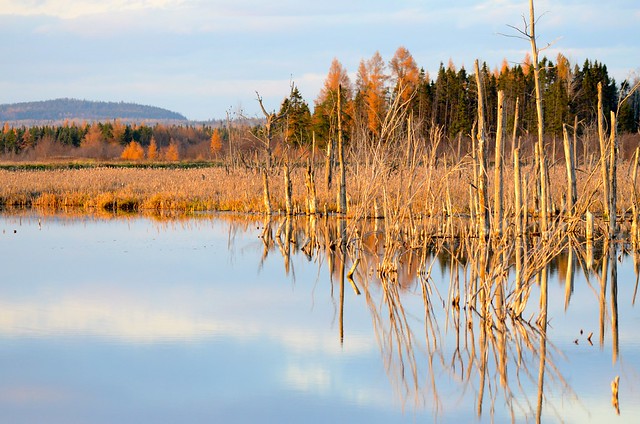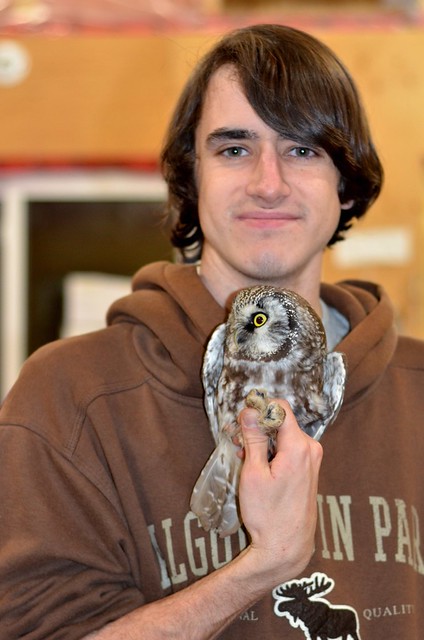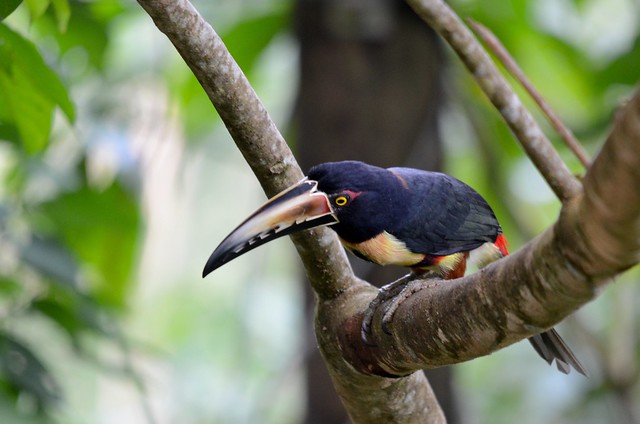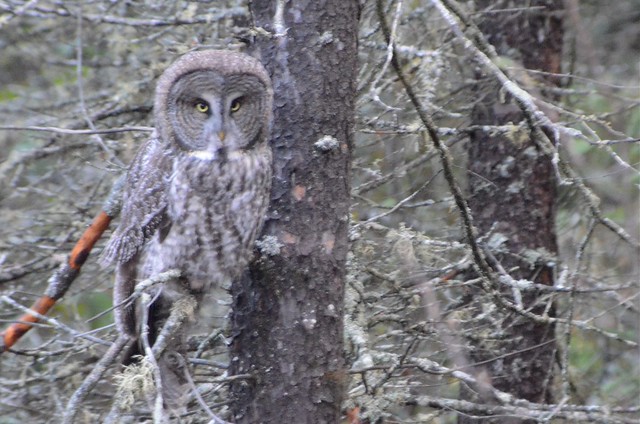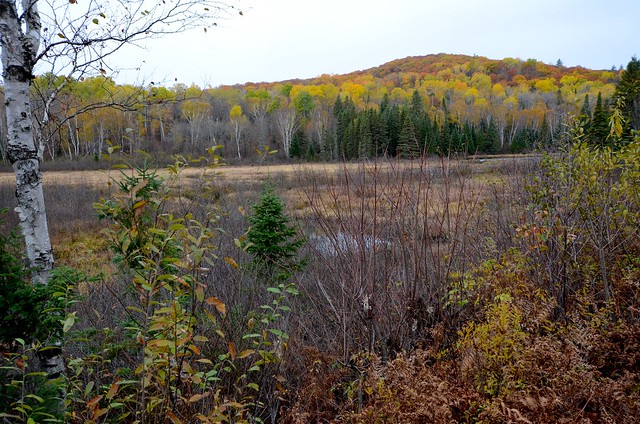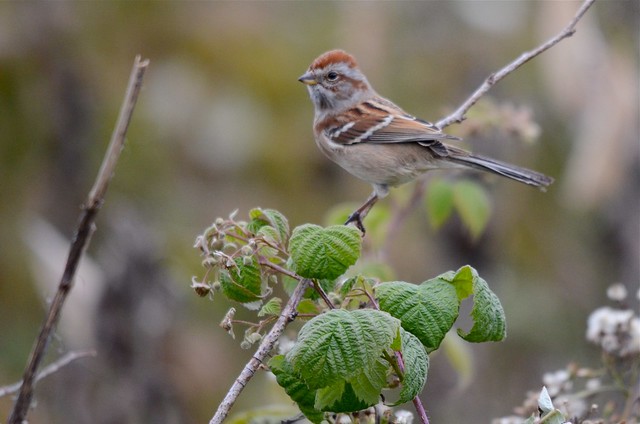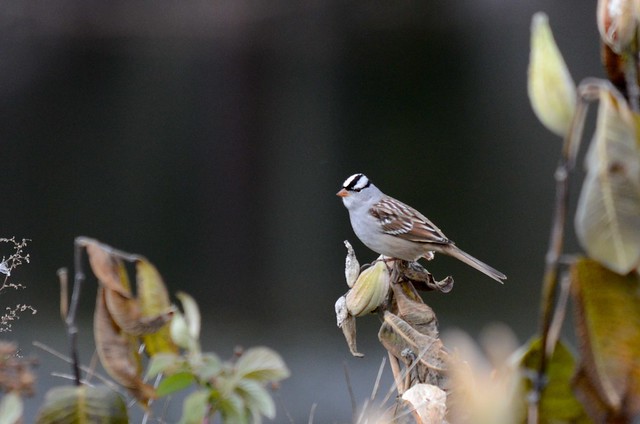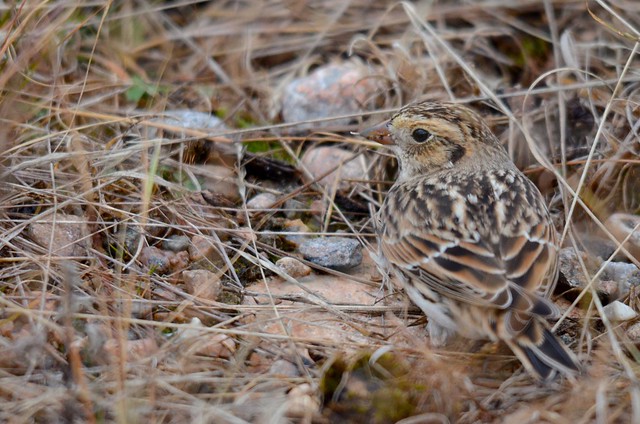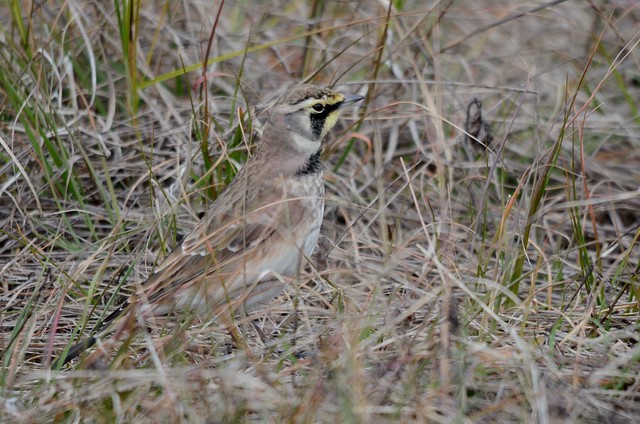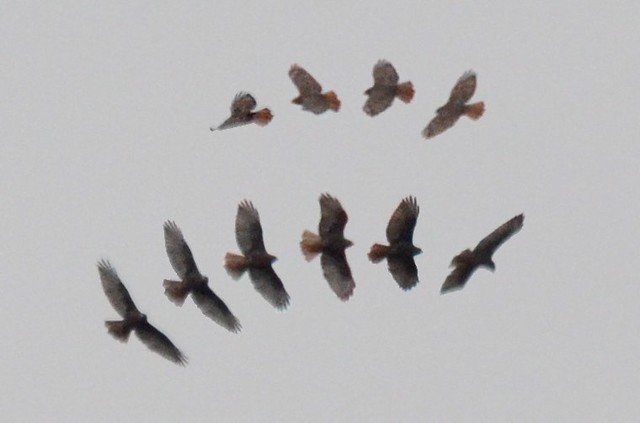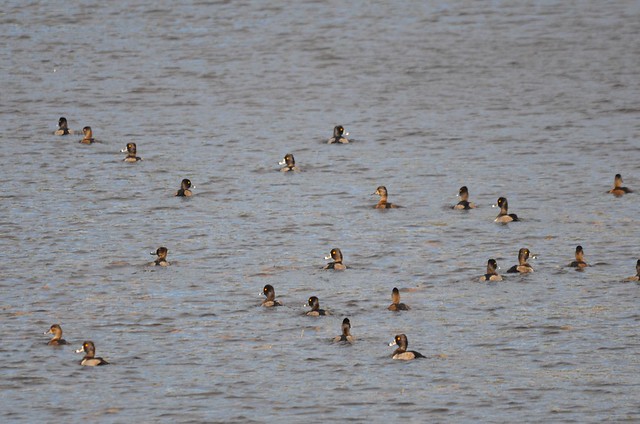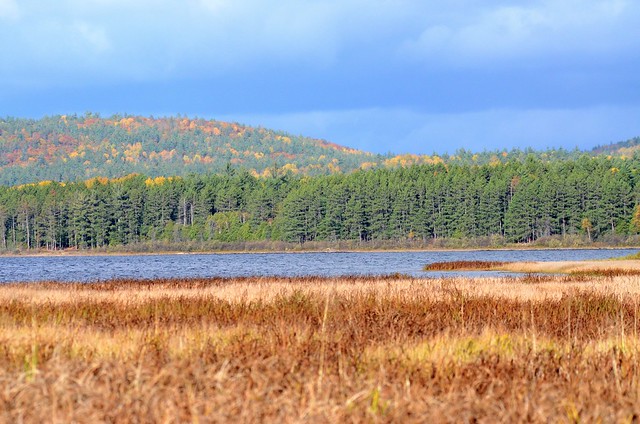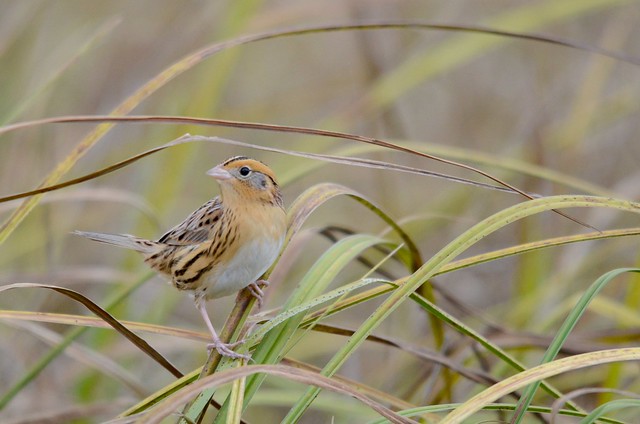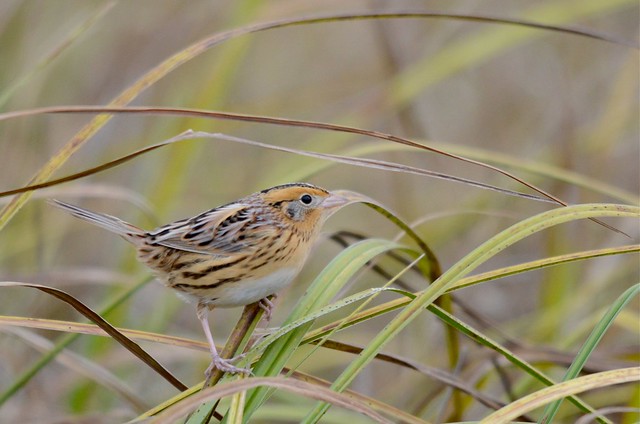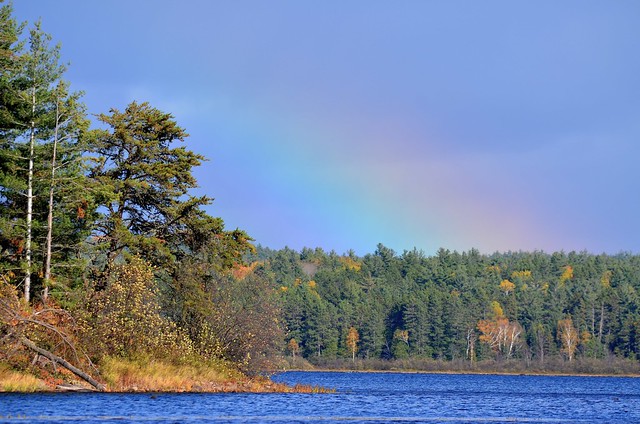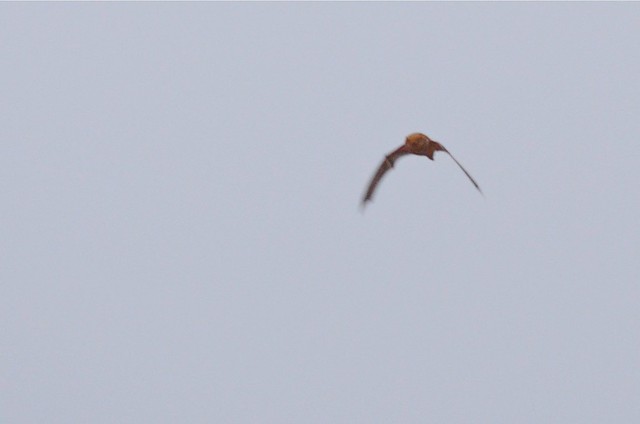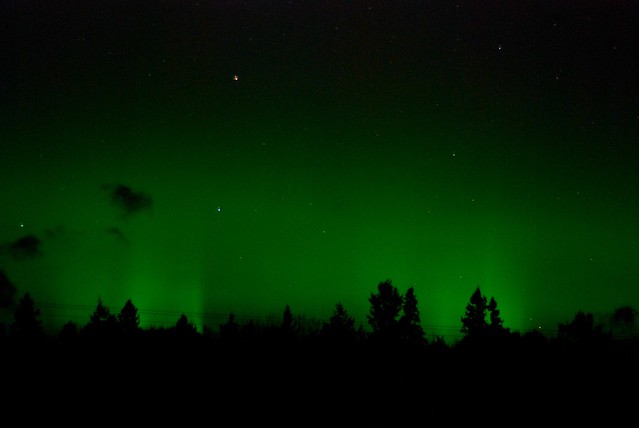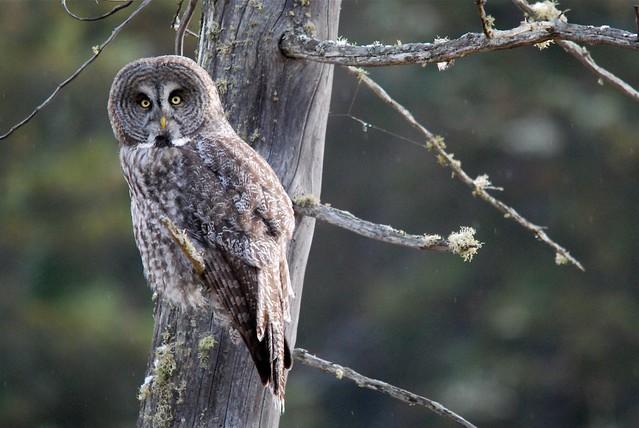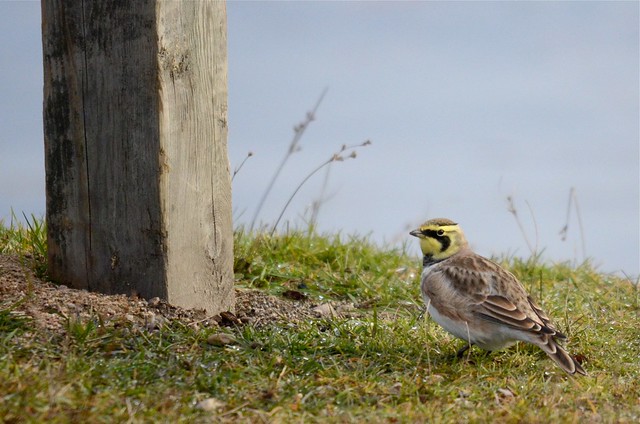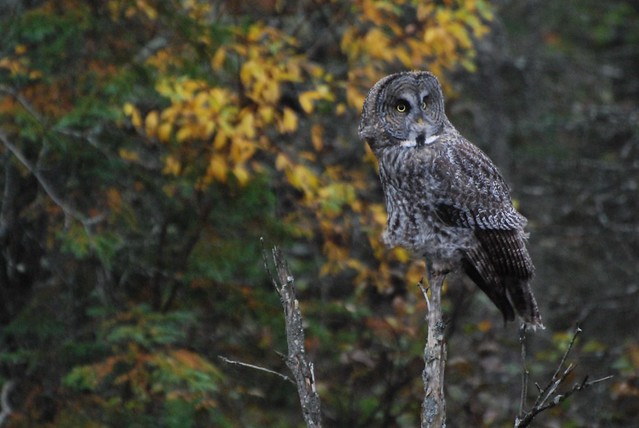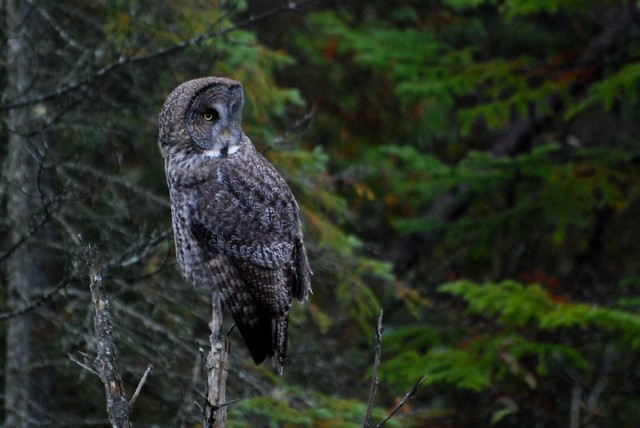The Northwoods' hardwood trees have almost all lost their leaves but this does not mean there is no color to be seen. The Tamarack, a deciduous conifer, blazes a beautiful golden-yellow, which has replaced the reds and oranges of the hardwoods in Algonquin.
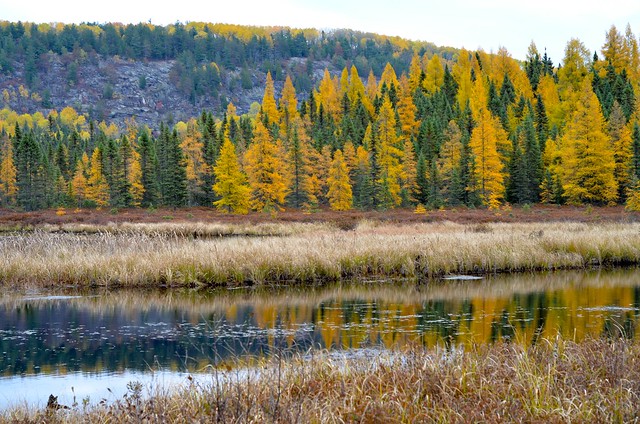
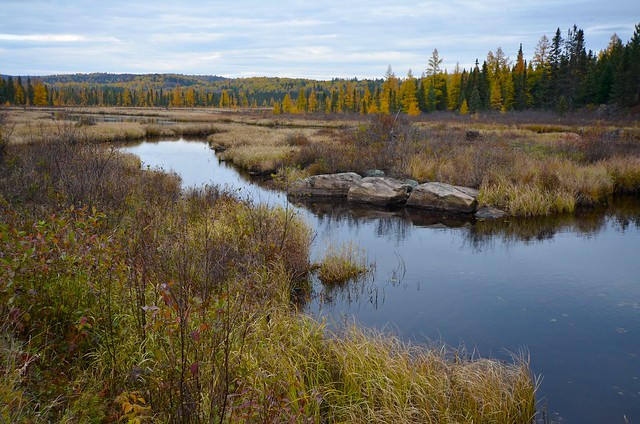
The first destination of my "Northern Adventure" was North Bay - the home of two very close friends of mine whom I've known for years - Sonje Bols and Duncan Hill. They were inviting Sonje's sister Andrea and her cousin Caroline over as well. It was going to be a good weekend.
We went to Science North, where I touched a Beaver (for the first time in who knows how long) and also the Big Nickel
And even managed to get some birding in by stopping to look at some Sandhill Cranes.
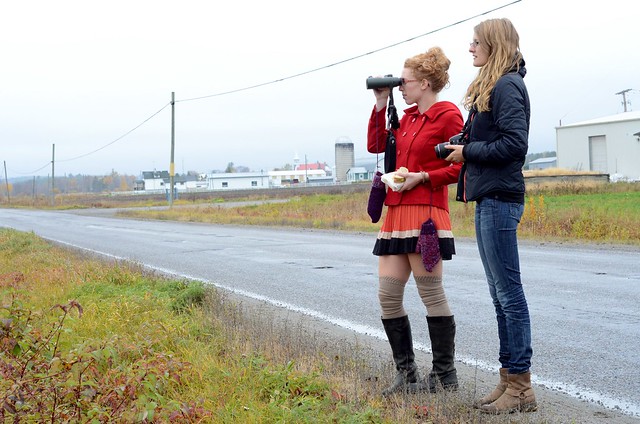
How we bird.
The nightlife in North Bay, and this coming from a Torontonian, is quite good. I won't get into much detail as my image is at stake (and some people are concerned about me, apparently), but I will say that we thoroughly enjoyed it. We walked off the after-effects the next morning at Duchesnay Falls (which is beautiful and I recommend it highly), seeing some more birds along the way until it was time for Andrea and Caroline to leave and we said our see-you-laters.
I stayed at Sonje and Duncan's place for one more night, and the next morning Sonje and I birded Laurier Woods for a bit and saw some goodies - A Hoary Redpoll amongst Commons and Pine Siskins, and this -

This adult Northern Shrike was singing it's odd, mockingbird-like song.
Suddenly, I heard a deafening chorus from the fields over the hills. Almost dinosaur-like cackles, trumpets and clatters were produced from birds - Sandhill Cranes about to head into roost. And soon, as wispy lines, they began to appear on the horizon.
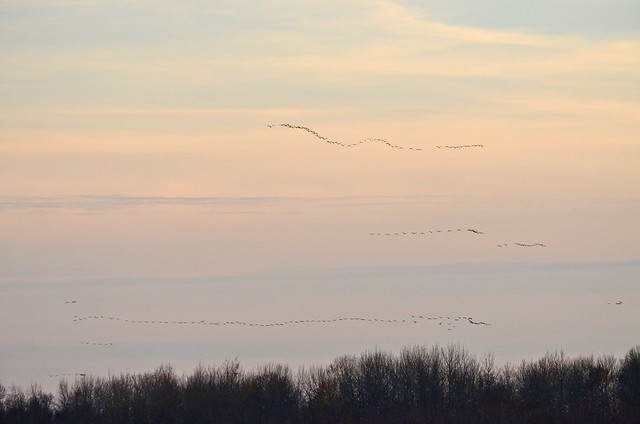
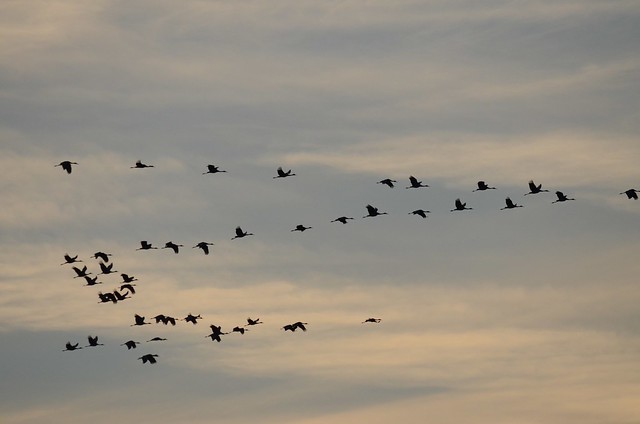
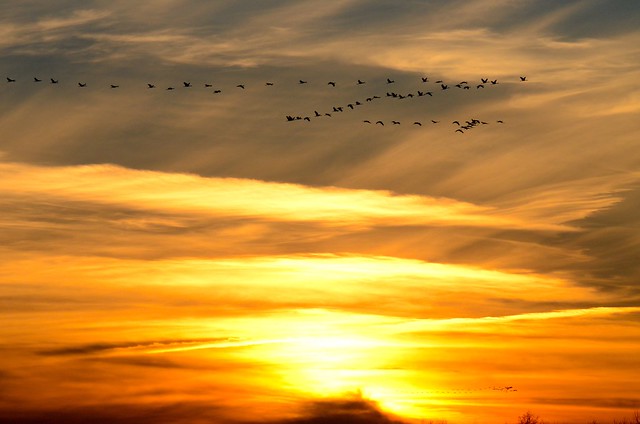
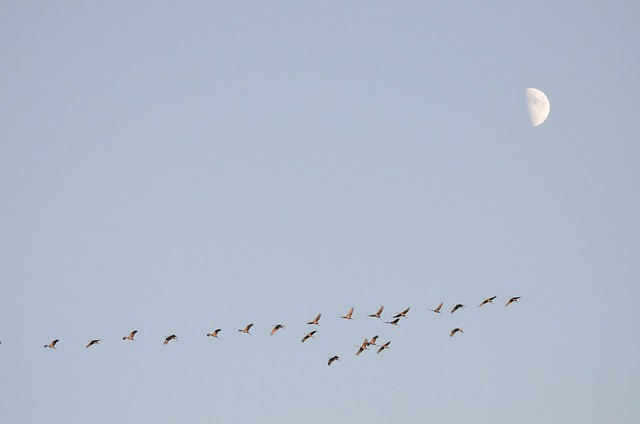
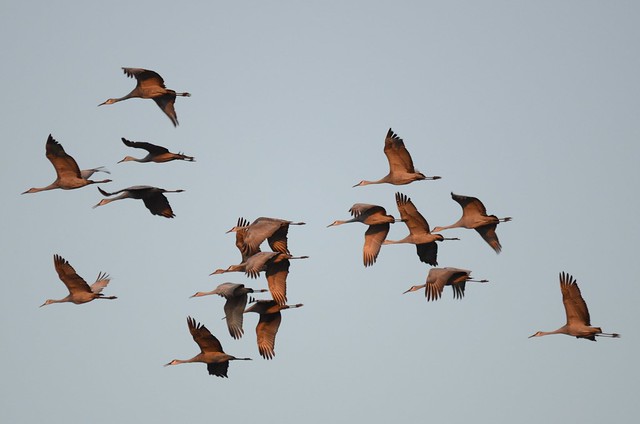
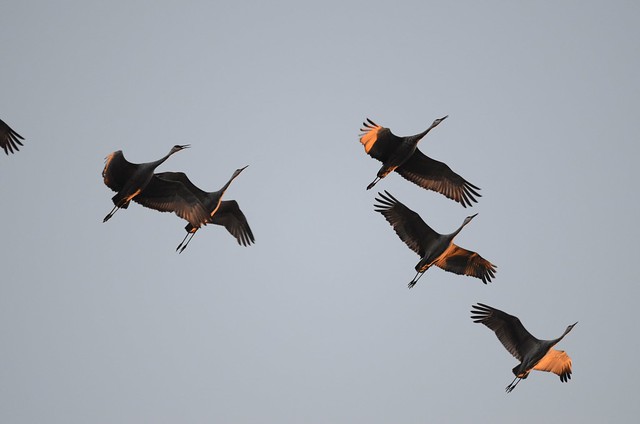
I counted just over 900 birds, and as quickly as they arrived, they were gone. It was almost pitch dark, but to the west the Boreal was backlit by a blood-red sky. And there were night birds stirring.

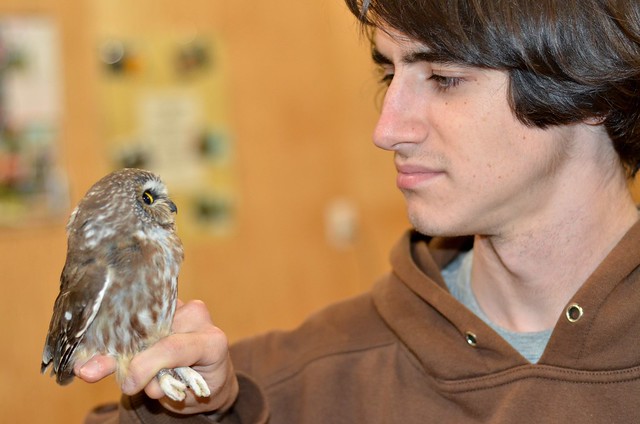
Northern Saw-whet Owl
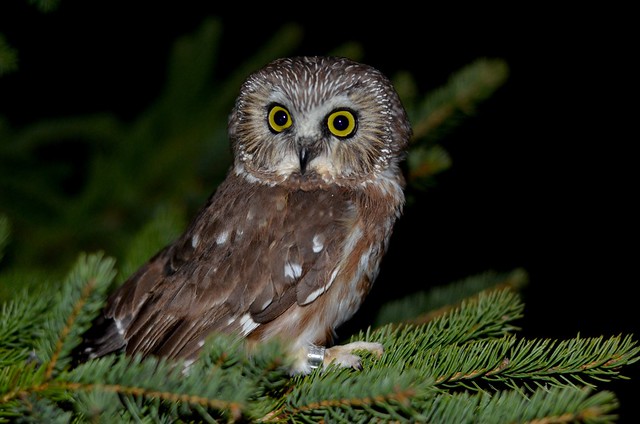
Northern Saw-whet Owl
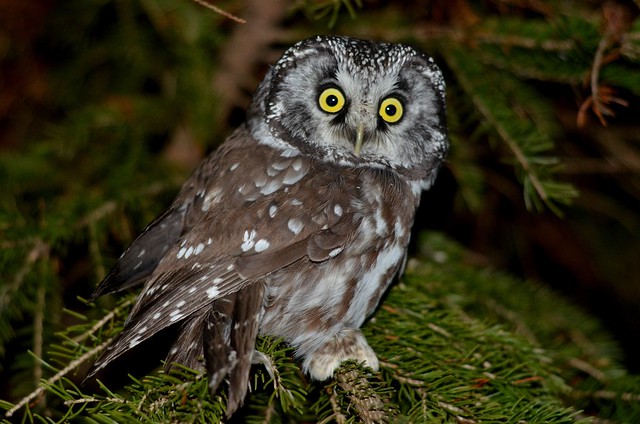
I bid Sonje and Duncan goodbye and thanked them for their hospitality, and headed even further up north for a date with an owl.
I arrived in the true Boreal forest in Northern Ontario well before dusk, so I had some time to kill. It was beautiful up here, where the hardwoods give way to vast forests of spruce, tamarack and pine.
Suddenly, I heard a deafening chorus from the fields over the hills. Almost dinosaur-like cackles, trumpets and clatters were produced from birds - Sandhill Cranes about to head into roost. And soon, as wispy lines, they began to appear on the horizon.

At first there were dozens. In just a few minutes, there were hundreds.



As they came closer, some went right over my head.


I counted just over 900 birds, and as quickly as they arrived, they were gone. It was almost pitch dark, but to the west the Boreal was backlit by a blood-red sky. And there were night birds stirring.

The Boreal Owl, also called Tengmalm's Owl, is weird. Though Tengmalm's is relatively well known from studies done in Scandinavia, it's darker cousins in North America are little-studied and in recent years we are just starting to figure them out. They are strongly migratory in relation to food sources (probably mostly Red-backed Vole), but where they go is unknown. This year is the fourth year in the cycle, and Bruce Murphy has been catching record numbers of them at Hilliardton Marsh, near New Liskeard in Northern Ontario. He is no doubt contributing a lot of information about these little-known owls, especially if his birds are ever recaptured elsewhere. I helped Murph band them for a couple of nights.
They are very painful to take out of the net. Boreals, like most owls, are sexually dimorphic in the fact that the females outweigh the males. The bird I am holding is a large female - the males are scarcely larger than a big Northern Saw-whet, another migratory owl.
Saw-whets are more predictable in their movements, as recapture data shows many of the little owls wintering in the midwest - Pennsylvania, Kentucky, Virginia and the like, where deep snow does not threaten their survival. They, unlike from what we know of the Boreals, move in numbers every year (though some years more than others)
They are very painful to take out of the net. Boreals, like most owls, are sexually dimorphic in the fact that the females outweigh the males. The bird I am holding is a large female - the males are scarcely larger than a big Northern Saw-whet, another migratory owl.
Saw-whets are more predictable in their movements, as recapture data shows many of the little owls wintering in the midwest - Pennsylvania, Kentucky, Virginia and the like, where deep snow does not threaten their survival. They, unlike from what we know of the Boreals, move in numbers every year (though some years more than others)

Northern Saw-whet Owl

Northern Saw-whet Owl
I have only ever been lucky enough to see one Boreal Owl in my life prior to these few days, where we banded more than a dozen of the enigmatic northerners. It is truly one of North America's most difficult birds to see, and it felt wonderful to have the bird in the hand for close inspection.
With that, I ended by Ontario season. Look for a post in the next few days about the highlights.
I drove back to Toronto, and within a few days I was back at Rancho Naturalista, in the Caribbean Foothills of Costa Rica, for another adventure. Life is grand. Within three days, I went from Boreal and Saw-whet Owls to Mottled and Crested Owls, simultaneously singing away on my first night.
I went, very quickly, from one paradise to the other. Sometimes I think to find something more steady than this romantic, Bohemian lifestyle that I've been living. Nobody knows where I'll go...not even me. It somewhat reminds me of some owl....

And then, of course, I remember there are birds and places to be seen and forget about it. I'll make it work - the waxwing does fine and so will I. Anyhow, how else am I to get material for this blog?
Collared Aracari in my yard.


